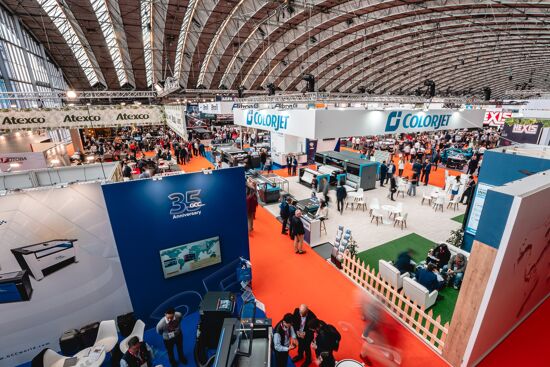Digital print packaging market to hit $31.6bn by 2024
.jpg?width=750)
Smithers Pira expects the global digital print packaging market to grow at a compound annual growth rate of 13.1% between 2019 and 2024.
The global digital print packaging market could be worth as much as $31.6bn (£26.1bn/€28.6bn) by the year 2024 if current growth levels are to continue, according to a new report by the Smithers Pira organisation.
Smithers Pira, a worldwide authority on the packaging, print and paper supply chains, values the current digital packaging and label printing market at $18.9bn, but as a result of ongoing expansion in this sector, forecasts massive growth over the next few years.
In its recent ‘The Future of Digital Print for Packaging to 2024’ report, Smithers Pira notes that the digital print market has more than doubled over the past five years in both value and print volume. This has been boosted by an increase in the use of corrugated materials, cartons, flexibles and rigid plastics.
Such has been the level of the growth that Smithers Pira has estimated the digital packaging sector will expand at a compound annual growth rate (CAGR) of 13.1% from now until 2024, to the equivalent of 383.6 billion A4 prints.
Should this be the case, then digital packaging will account for 6.38% of all print packaging by value by 2024.
“Increasingly, digital print is being used to print labels, corrugated, cartons, flexibles, rigid plastic and metal packaging; it is taking share from analogue print – litho, flexo and gravure – and is opening up totally new opportunities,” Smithers Pira said in a statement.
“Technology developments have allowed converters to install digital print equipment that delivers high-quality output, suitable for particular applications, cost-effectively and at high productivity.”
As to why the market continues to grow, Smithers Pira has cited a number of key attributes that are driving this expansion, including that digital print technology has the ability to produce short runs economically, fitting in with wider trends in the market.
Smithers Pira also highlights how brands are now using digital print to create personalised labels and packs, or versions to appeal to sections of the market, thus boosting engagement with consumers.
In addition, Smithers Pira said that digital technology is helping to complement analogue kit, citing research that shows as the number of digital presses installed at converting operations grows, users are reporting digital capability can directly improve the overall performance of their analogue equipment.
“Digital print gives converters greater agility to meet the ever more demanding schedules and version differentiations of brands and retailers,” Smithers Pira said in a statement. “The capability for total variability allows brands to boost brand performance by doing new things, offering higher levels of engagement and new customer experiences.”
Topics
Interested in joining our community?
Enquire today about joining your local FESPA Association or FESPA Direct
Recent news

GenAI + POD: The Smartest Way to Add Personalised Products to Your Retail Offering in 2025
In 2025, GenAI and POD are transforming retail. Masterpiece AI empowers businesses to offer unique, AI-generated personalised products, from apparel to home decor. Customers use text prompts to create custom designs, streamlining production and boosting sales. This revolutionises customer experience and product offerings.
.png?width=550)
What qualities should visionaries in print have? With Folker Stachetzki from Brother
We speak to Folker Stachetzki, Head of Marketing at Brother about visionaries in print.

Bolstering personalisation by combining print and digital technology
Using printed material in combination with digital technologies offers more opportunities to those offering personalisation to customers. Rob Fletcher shares some recent examples of the print and digital working together to enhance the impact of personalised pieces.

European Sign Expo to highlight developments shaping the future of signage and visual communications
European Sign Expo 2025 (6 – 9 May, Messe Berlin, Germany) is weeks away and a host of leading exhibitors are all set to welcome Visionaries from across the signage and visual communications industries to their stands.